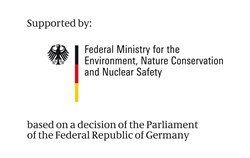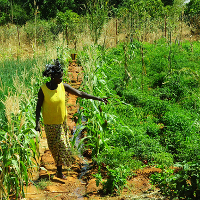20 November 2013
Land-use models can make effective REDD policies a reality
Reducing Emissions from Deforestation and forest Degradation (REDD), established by the UNFCCC in 2008 is a policy effort aimed at helping developing countries reduce their impact on climate change by paying them to protecting forests. But the reasons for deforestation are complex, and it can be difficult to foresee the effects of various policies and incentives.
At a special session of the Global Landscapes Forum, held on the margins of the COP19 conference in Warsaw last weekend, IIASA researchers spoke to decision makers about their research using the GLOBIOM model to support REDD policy efforts as part of the REDD Policy Assessment Center (REDD-PAC) project. The project aims to capture all the drivers of deforestation and determine their interactions, providing a tool that policymakers and stakeholders can use to envision the outcomes of their policy choices.
“This kind of land use modeling really helps to gain a more structured thinking of what happens when a policy is put in place,” said Alexandre Ywata of the Brazilian Institute of Applied Economic Research (IPEA) during the session, which was organized by IIASA and the (UNEP-WCMC).
Participants in the session emphasized the importance of evidence-based decision making and capacity building as well as the important role of land-use modeling.
Martin Tadoum, Deputy Executive Secretary of the Central African Forestry Commission (COMIFAC) highlighted the importance of modeling in the Congo Basin. He emphasized how in regions like the Congo Basin which have previously had low rates of deforestation, modeling can help in understanding the likely impact of future development trajectories.
Nur Masripatin, Indonesia Ministry of Forestry and REDD+ Lead Negotiator in UNFCCC meetings for the past few years, joined the session straight from the COP 19 negotiations. She stressed the “need for pro-active policy making.”
At the session, Dr. Agung Wicaksono, the Special Assistant to the Head of President’s Delivery Unit for Development Monitoring and Oversight (UKP4), announced the start of IIASA’s Tropical Flagship Project, which will start with a kickoff meeting in early 2014. The project extends the REDD-PAC project from the Congo Basin and Brazil to also include research in Indonesia and potentially other areas of Southeast Asia.
More information
- Read a blog by IIASA researcher Aline Mosnier on REDD+ efforts in the Congo Basin
- Global Landscapes Forum Meeting Web site
- REDD-PAC Web site
- BMU Climate Web site
- International Climate Initiative


CONTACT DETAILS
Research Group Leader and Principal Research Scholar Agriculture, Forestry, and Ecosystem Services Research Group - Biodiversity and Natural Resources Program
Principal Research Scholar Exploratory Modeling of Human-natural Systems Research Group - Advancing Systems Analysis Program
Guest Research Scholar Novel Data Ecosystems for Sustainability Research Group - Advancing Systems Analysis Program


